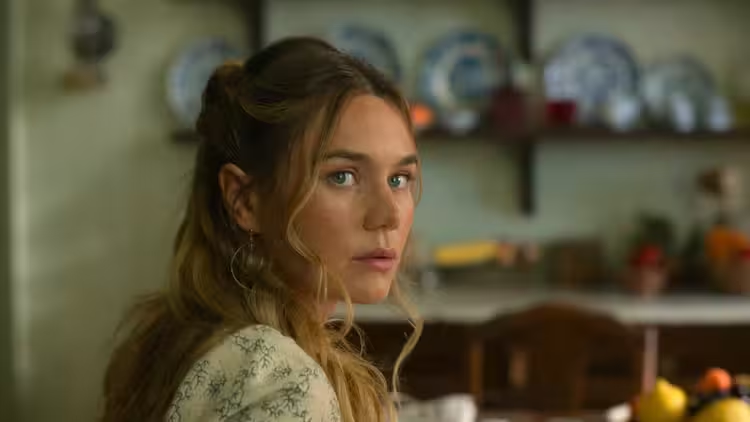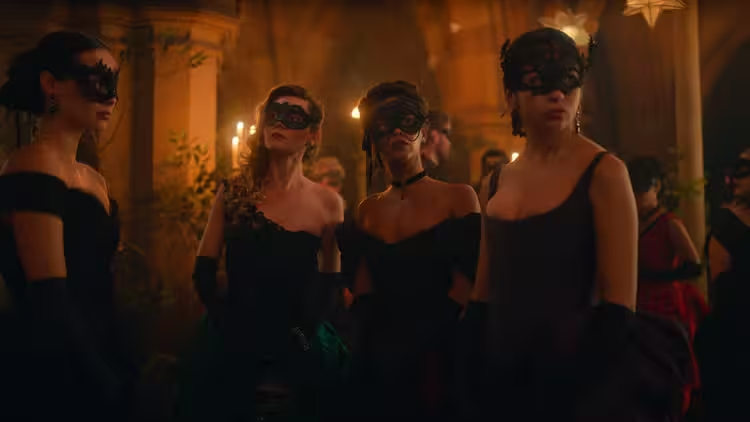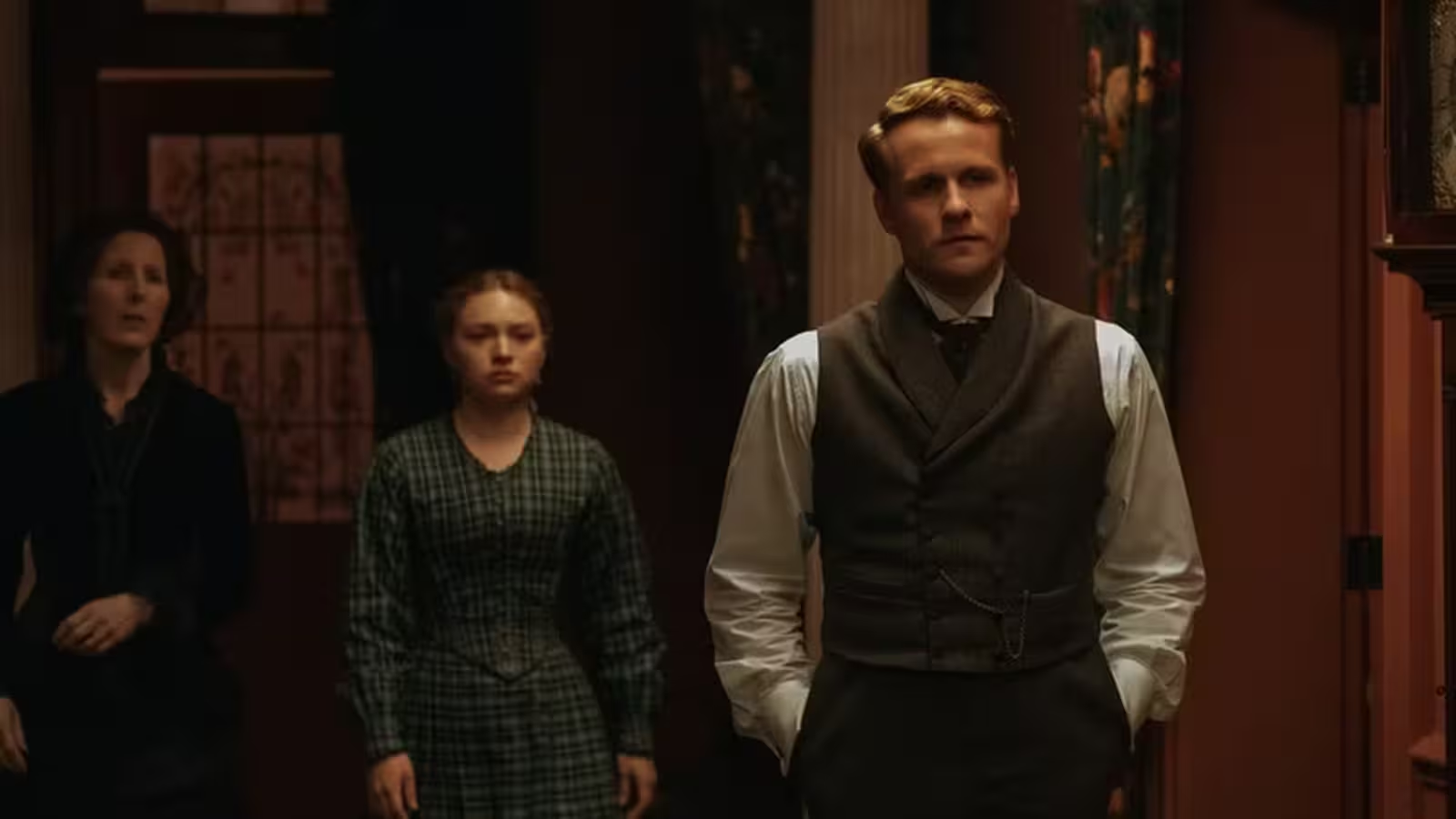9 Minutes
Introduction: A Bolder, Darker Season
Apple TV+'s period drama The Buccaneers returned for Season 2 with higher stakes, sunnier locales, and sharper emotional consequences. What began as a spirited story about five American heiresses arriving in Edwardian England quickly deepened into a tangled web of loyalties, betrayals, and aching yearnings. This feature explores the major plot beats of the season, the actors’ perspectives on their characters, production choices that shaped the look and feel of the show, and how critics and fans have responded.
Plot Summary: From Glamour to Gut Punch
Season 2 expands the canvas. The story follows Jinny and her baby, a daring rescue, and a family torn apart by a shocking act that forces the characters to reckon with loss and guilt. When Lord James Seadown stages a desperate kidnapping—seizing his own son with Jinny—the drama propels Jinny out of a hideaway in Italy and back into danger. A sibling confrontation unfolds as Seadown's brother Richard and sister Honoria rush to intervene. They succeed in getting Jinny and her child to safety, but the rescue’s victory is undercut by tragedy: Richard is fatally shot. His death becomes a seismic moment that fractures friendships and leaves the group scrambling to forgive and rebuild.
Parallel storylines thicken the plot. Theo’s abdication as Duke of Tintagel for Lizzy creates political and romantic reverberations. Nan’s secret pregnancy and the emotional fallout complicate existing relationships, while Paloma’s possession of annulment papers adds an extra layer of jeopardy to Guy and Paloma’s future. The season shuffles alliances and tests loyalties, refusing easy reconciliation even as it carves intimate, quietly redemptive moments—for example, the makeshift rituals of a friend group trying to soothe a wound with cakes and sleepovers.

Character Arcs: Seadown, Jinny, Guy, and the Rest
Lord James Seadown
Seadown is the series’ most morally ambiguous figure this season. His kidnapping of his child is a violent, traumatic escalation that reveals a man who is both broken and terrifyingly resolute. Portrayed with unsettling depth, he is neither cartoon villain nor sanitised villain—viewers see remnants of humanity amid his darkness, making the fallout all the more heartrending.
Jinny and Conchita
Jinny carries heavy guilt in the wake of the kidnapping and Richard’s death. Her relationship with Conchita, once buoyant, is tested to its core. The two women move through grief, anger, and ultimately tentative attempts at repair. Their reconciliation scenes—simple, domestic, and achingly human—speak to the series’ gift for intimacy within a broader historical canvas.
Guy, Nan, and Paloma
Guy is caught between steady, enduring feelings for Nan and a potential new life with Paloma. Matthew Broome’s portrayal captures a man who remains sentimental about Nan but also yearns for a less turbulent future. Nan’s secret adds urgency and secrecy to their dynamic; whether they can sustain the relationship amid so much external turmoil remains one of the season’s emotional engines.

Cast and Crew: Who Brought It to Life
The Buccaneers boasts a strong ensemble that blends established talent with rising stars. Key cast members include:
- Imogen Waterhouse as Jinny: A complex lead whose compassion and guilt drive much of the season’s emotional heart.
- Matthew Broome as Guy: A conflicted romantic torn between devotion and the possibility of a calmer life.
- Barney Fishwick as Lord James Seadown: A chilling, complicated antagonist whose actions reshape the season.
- Josh Dylan as Richard and Mia Threapleton as Honoria: Siblings whose loyalty and courage culminate in a devastating loss.
- Alisha Boe as Conchita, Kristine Frøseth as Nan, Grace Ambrose as Paloma, Aubri Ibrag as Lizzy, Guy Remmers as Theo and other ensemble members round out the social world of the series.
Behind the camera, the showrunner and executive producers expanded the series’ visual and emotional scope. Directors, costume designers, cinematographers, and composers worked to reframe the Edwardian era: brighter palettes, sunlit exteriors, and a soundtrack that leans into both period authenticity and modern emotional rhythms.
Production: Sunlit Victorians and New Locations
One of Season 2’s most striking production choices was to shoot scenes in Croatia standing in for Italy. The decision to relocate the action to a Mediterranean lightscape refreshes the visual language of the show. Costumes were adjusted accordingly—lighter fabrics, sun-friendly silhouettes—and the cinematography embraced outdoor sequences and coastal vistas. Cast members described the experience as a welcome change of pace: swimming after long shoot days, enjoying lighter wardrobe, and capturing a Victorian sensibility in a distinctly sunnier climate.
Barney Fishwick, who joined on location for key scenes, described the shoot as brief but exhilarating, noting that the contrast between the grim family drama and the beautiful surroundings amplified the season’s tonal complexity. The production designers managed to preserve period detail while allowing the new location to feel organic to the story.
Key Scenes and Filming Challenges
The rescue sequence that ends in Richard’s death demanded emotional accuracy and logistical nuance. Actors who had not shared many scenes previously found they could lean on established off-camera friendships to produce a believable sibling dynamic. That kinship helped the crew stage moments of dark humor and tenderness that softened a sequence otherwise dominated by tragedy.
Practical elements—gunfire choreography, stunts, and emotional direction—were coordinated to maintain authenticity without sensationalism. The result is a scene that lands like a physical blow: necessary, devastating, and resonant.
Critical Reception and Audience Response
Critics have praised Season 2 for intensifying the stakes while preserving the characters’ emotional core. Reviews highlight the show’s ability to balance period spectacle with intimate human drama, noting that key performances—particularly from Waterhouse, Broome, and Fishwick—elevate the material. Some viewers have debated the tonal pivot toward darker moments, but many appreciate that the writers are willing to take risks and put beloved characters through real consequences.
Ratings and streaming buzz indicate healthy interest: social media conversations spike around episode drops, particularly the episodes containing the kidnapping and its aftermath. The show’s renewal momentum seems tied to its willingness to evolve—a rarity in many adaptations that prefer safe repetition.
Themes and Analysis: Friendship, Guilt, and Social Expectation
The Buccaneers thrives when it interrogates the expectations of class, gender, and duty. Season 2 uses melodrama and period political maneuvering to ask contemporary questions about agency and emotional labor. At the center are friendships tested by secrecy, betrayal, and grief—relationships that are reconciled not in grand proclamations but through small rituals: a shared cake, a sleepover, a whispered apology.
Seadown’s arc poses questions about whether a person can be redeemed after a violent breach of trust. Richard’s death reframes responsibility in painful ways: guilt, even accidental, can survive long after the event, coloring every future choice.
Personal Opinion: Why This Season Matters
For fans of historical drama, Season 2 is a compelling mix of spectacle and interior life. It’s rare to see a show balance sumptuous production design with an almost modern emotional honesty. The decision to challenge characters with irreversible consequences takes courage. Rather than retreat into melodramatic clichés, The Buccaneers lets grief be messy and forgiveness be earned.
The performances are worth particular attention. Waterhouse anchors Jinny with vulnerability and steely compassion; Broome brings conflicted yearning to Guy; Fishwick offers a chillingly human portrait of a man who has crossed a line. Together, they deliver a season that feels both operatic and intimately true.
Where to Watch and Final Thoughts
Both seasons of The Buccaneers are available to stream on Apple TV+. If you’re drawn to character-driven period dramas with modern emotional stakes, Season 2 is a must-watch: it’s visually sumptuous, narratively bold, and emotionally uncompromising.
Whether you’re here for the costume design, the transportive locations, or the tense character work, Season 2 of The Buccaneers amplifies everything that made the show compelling in the first place—and isn’t afraid to take the consequences seriously.
Quick Takeaways
- Expect darker emotional territory and moral ambiguity.
- Key performances by Imogen Waterhouse, Matthew Broome, and Barney Fishwick anchor the season.
- Croatia’s sun-soaked locations give the series a fresh aesthetic.
- The rescue sequence and Richard’s death are central turning points.
- Themes of guilt, friendship, and social expectation are explored with nuance.
Tune in, brace yourself for spoilers, and savor a season that chooses complicated, human truth over tidy resolutions.
Source: collider



Leave a Comment